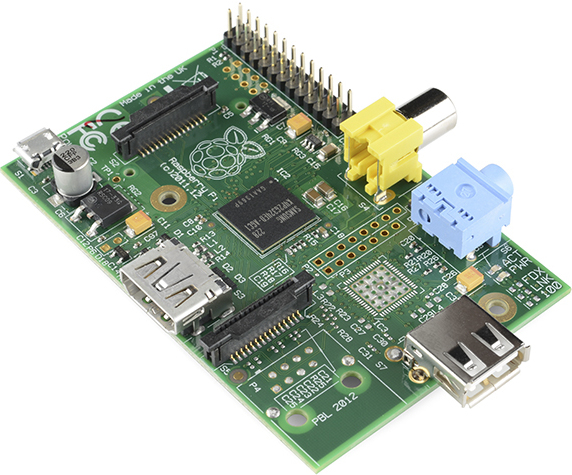History of Computers - Raspberry Pi
Raspberry Pi is a credit-card sized computer intended to be a cheap and effective way of teaching computing in school classrooms and for "various electronics projects"[1].

Overview
The Raspberry Pi was developed by the Raspberry Pi Foundation to be a low-cost way of teaching basic computing and programming principles to children in classrooms. In February 2012, the "Model B" variant was released, costing $35. On February 4th, 2013, the company started accepting orders for a stripped-down version known as the "Model A" for $25. On July 14, 2014, the Model B+ was released, serving as an improved version of the Model B for the same price. Partly because of its cheap price, the Raspberry Pi can be used for a variety of projects, including a cheap supercomputer with a Raspberry Pi and Lego framework.[2]
Specifications
Being simplified, the processing power of the Raspberry Pi is somewhat limited, compared to high-end computers of its era: it has a 700MHz processor, 256 (for Model A and early Model B) or 512 (Late Model B and B+) MB of RAM and has no hard drive, using an SD card for storage and booting.[3][4] It runs on a variety of Linux operating systems and is programmable primarily in Python as well as C, C++, Java, and Ruby.[5]
Models
The Raspberry Pi has five models. Models A and B were the original two models. The Model B+, a revision of the Model B, was released in July of 2014. The Model A+, like the B+, was a revision of the Model A.[6] In 2017, the new and smaller Raspberry Pi Zero W was released, featuring a smaller board and wireless LAN and bluetooth [7].
Significance
The Raspberry Pi is significant both to the history of computing and to today for two reasons, both stemming from its low cost and accessibility. The first is that its purpose as a teaching tool could train the technological innovators of the future and familiarize them with computers, or even just increase overall computer literacy. The second is its potential to be used cheaply and in large numbers for powerful projects; the supercomputer mentioned above cost slightly over $4000, a fraction of the price of other supercomputers, which can cost in the hundreds of thousands or millions of dollars.
References
- ↑ http://www.raspberrypi.org/help/faqs/
- ↑ http://arstechnica.com/information-technology/2012/09/university-builds-cheap-supercomputer-with-raspberry-pi-and-legos/
- ↑ http://downloads.element14.com/raspberryPi1.html
- ↑ http://www.raspberrypi.org/products/model-b-plus/
- ↑ http://www.raspberrypi.org/help/faqs/#softwareLanguages
- ↑ https://www.raspberrypi.org/documentation/hardware/raspberrypi/models/README.md
- ↑ https://www.raspberrypi.org/blog/raspberry-pi-zero-w-joins-family/
Additional Links
The official Raspberry Pi website